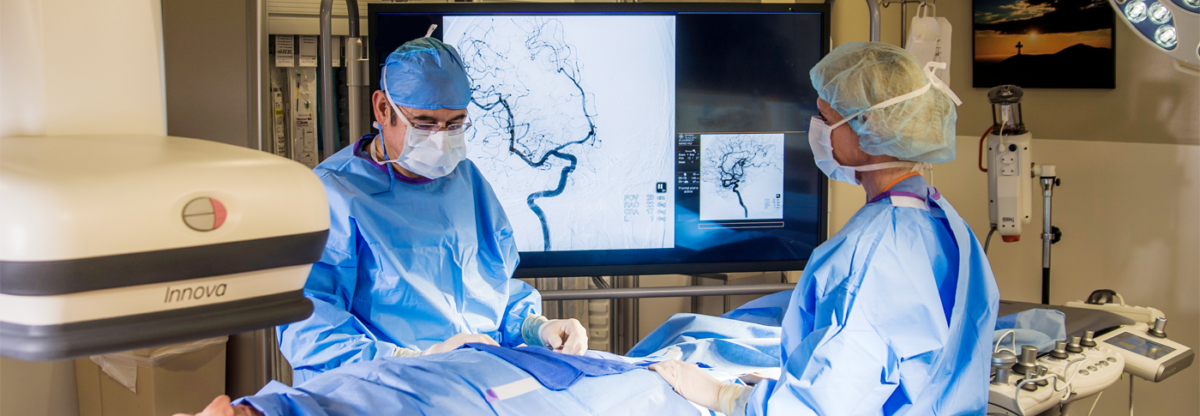
Neurointerventional radiologists are specially trained physicians who perform minimally invasive surgery in the blood vessels that supply the brain and spinal cord. Neurointerventionalists use special imaging and catheter-based techniques to treat blood vessel diseases in the head, neck, brain, and spinal cord. Interventional neuroradiology can assist or can be an alternative to, conventional open neurosurgery.
Your neurointerventionalist is a consultant. You will typically meet together in an office visit before your procedure to review your problem, your health history, and the advantages and risks of any neurointerventional procedure. We’ll also review your medications. We may ask you to stop taking some medications or take new ones leading up to your procedure. You may need additional tests, such as special CT scans, MRIs, or an angiogram (special pictures of your blood vessel pictures) prior to the actual intervention to help plan the procedure and make it safer.
Note: Interventional and Neurointerventional radiology procedures use a contrast agent—or dye—to make the diagnostic pictures called angiogram/angiography. Let your doctor know about any known allergies, especially prior reactions, to these contrast agents.
Your doctor may ask you to stop taking blood-thinning medications, such as Coumadin, Plavix, aspirin or non-steroidal anti-inflammatory drugs, before having any invasive procedure where we enter an artery.
All interventional procedures in which you undergo general anesthesia or conscious sedation require you don’t eat or drink anything after midnight the night before your procedure. You can take your medications with a sip of water the morning of the procedure.
If you are having an outpatient procedure and you receive sedation or general anesthesia, you will need someone to bring you and take you home the day of the procedure.
You should always tell your doctor if you are pregnant, or if there is any possibility you might be pregnant, before undergoing diagnostic radiology procedures. You don’t want to expose your developing baby to any unnecessary radiation.
